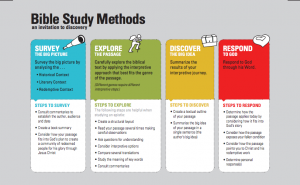Comment nous cherchons à parcourir avec tout le monde vers une relation avec Jésus.
Ce que nous croyons en l’Évangile et notre appel à desservir tous les pays.
Renseignez-vous sur l’équipe de leadership mondial du Cru.
Lorsque l’église mondiale se réunit ensuite puissant choses peuvent arriver.
Entendre ce que d’autres disent de Cru.
Menant de valeurs tellement d’autres marcheront passionnément avec Dieu à croître et à porter ses fruits.
View a list of our authors on Cru.org. These writers and photographers produce much of the great content we have to offer.
Showing God in action in and through His people.
Learn about Worldwide Challenge, the magazine of Cru.
Because ethnicity is part of the good of creation, we seek to honor and celebrate the ethnic identity of those with whom we serve as well as those we seek to reach.
Answers to questions on donations, financial policies, Cru’s annual report and more.
Comprendre comment vous pouvez connaître Dieu personnellement.
Expliquer les connaissances de base sur ce que croient les chrétiens.
Obtenir les réponses aux questions fréquemment posées sur les pratiques et les croyances chrétiennes.
Découvrez les réponses aux questions les plus importants de la vie.
Nous avons tous une histoire. Découvrez les personnes qui ont été transformées par la foi.
Aider les étudiants à connaître Jésus, grandir dans leur foi et allez dans le monde pour dire aux autres.
Connecting in community for the well-being of the city.
Partnering with urban churches to meet physical and spiritual needs.
Atteindre les perdus en se servant de l'outil digital
Reflecting Jesus together for the good of the city.
Equipping families with practical approaches to parenting and marriage.
Prayer is the backbone of all mission activities of the ministry and the key tool to fulfill the Great Commission.
Special Ministries
Explorer les questions de la vie des essais et épreuves pour la datation et le mariage.
Trouver des ressources pour le personnel ou d’un groupe d’étude de la Bible.
Understand evangelism and strategies to help share your faith story.
Help others in their faith journey through discipleship and mentoring.
These are the essential "How To's" which every Christian, newborn or with many years of maturity, needs to know and remember.
Your view of God and His character might be more important than you ever knew. Read more about some of His character traits such as love, absolute truth, faithful, righteous, and all-powerful.
Core Essentials training is designed to deepen your personal walk with the Lord. The lessons cover the basic principles of living a Christian lifestyle.
Prayer, Quiet Times, and Devotional resources from the ministry of Cru.
View our top Cru resources in more than 20 languages.
See a collection of classic Cru material from founder Bill Bright to help you grow in your relationship with Jesus.
Développez vos compétences en leadership et apprenez à lancer un ministère où que vous soyez.
Partenariat avec Cru sur un voyage de missions à court terme.
Possibilités de stage avec les ministères du Cru.
Dernières offres d’emploi à Cru.
Vivre à l’étranger, établissement de relations et ministères avec eternal impact.
Vous souhaitez donner de votre temps pour travailler avec Cru ? Nous avons besoin de vous.
Trouver la liste un emplois avec Cru.
Comment donner une fin du cadeau de l’année à un membre de la Cru ou au ministère.
Nous sommes heureux de vous annoncer le début d’une nouvelle application en ligne combinée pour tous les postes pris en charge.
Utilisez vos loisirs et vos intérêts pour trouver le meilleur endroit pour vous servir.
Internship opportunities with Cru's ministries.
Find your next step and live out your calling with Cru.
Ce que vous faites dans votre vie pour développer la simplicité et la pureté de la dévotion au Christ ? Utilisez ces 3 concepts pour s’engager dans une marche plus profonde avec le Seigneur.
Peut-être plus important que de comprendre les signes d’alerte, les dirigeants doivent un plan et une stratégie pour éviter les écueils que menant d’autres peut apporter.
Découvrez la vérité de la vie, remplis de l’esprit, avec des ressources sur la façon d’être rempli, marcher avec et l’expérience de l’Esprit Saint.
Si vous êtes une infirmière, un avocat ou vous avez été sur la lune, Dieu unique vous a donné des chances d’être généreux avec votre vie et d’exprimer sa générosité.
J’ai appris 6 principes pour me guider car je cherche la volonté de Dieu dans toutes les situations
Prendre la prochaine étape dans votre voyage de foi avec les dévotions, les ressources et les vérités de base.
Découvrez comment faire l’expérience de la vie abondante et féconde promise par Jésus comme le résultat d’être dirigées et empowerd par l’Esprit Saint.
Dr. Bill Bright a écrit ces articles à la création de Campus Crusade for Christ comme un moyen facile de transférer les vérités essentielles de la foi à un jeune croyant.
Il existe des signes avant-coureurs si vous savez où regarder pour voir si vous, ou un dirigeant proche de vous, est à risque de burnout ou échec même moral.
Explore resources to help you live out your life and relationships in a way that honors God.
See a collection of classic Cru material from founder Bill Bright to help you grow in your relationship with Jesus.
Have some fun taking various quizzes and assessments to learn about yourself and others.
What does it take to grow in your walk with God?
What does it take to grow in your walk with God?
What does it take to grow in your walk with God?
See a collection of classic Cru material from founder Bill Bright to help you grow in your relationship with Jesus.
Have you ever wondered what God is like? Your view of God and His character might be more important than you ever knew. Everything about your life is influenced by your perception of who He is.
Have you ever wondered what God is like? Your view of God and His character might be more important than you ever knew. Everything about your life is influenced by your perception of who He is.
Have you ever wondered what God is like? Your view of God and His character might be more important than you ever knew. Everything about your life is influenced by your perception of who He is.
Sign up for the "I Still Believe" discussion guide.
Sign up for the "Just Mercy" discussion guide.
Explore resources to help you live out your life and relationships in a way that honors God.
Have some fun taking various quizzes and assessments to learn about yourself and others.

When one is studying a passage of Scripture, a basic but helpful pattern to follow is the threefold process of observation, interpretation, and application.
OBSERVATION
This is pretty straightforward: observe what the passage is saying and describing.
First, read through a portion of Scripture and then go back and make some initial observations about it: Who are the characters? What’s going on? Where is this taking place? Revisit the part of your brain that houses all of that literary criticism stuff your English teacher went on and on about while you doodled with your new four-color ballpoint pen. As a quick refresher, remember to ask yourself some basic who- what-when-where observational questions:
WHO is speaking? Who is this about? Who are the main characters?
WHAT is the subject or event covered in the chapter? What do you learn about the people, event, or teaching?
WHEN do/will the events occur or did/will something happen to someone?
WHERE did or will this happen? Where was it said?
WHY is something being said or mentioned? Why would/will this happen? Why at that time and/or to this person/people?
HOW will it happen? How is it to be done? How is it illustrated?
I can never remember the “how,” because it rebelliously begins with an h instead of a w. Maybe it’s the same for you. If so, that’s okay. This is just a general template; it’s not meant to be a science or a straitjacket. Once you get a feel for some of these questions, try to keep an eye out for key words or phrases, repeated words, contrasts and comparisons, and terms of summary and conclusions (“so that,” “for this reason,” and so on).
INTERPRETATION
Often observation slides right into interpretation. But strictly speaking, observation refers to trying to understand what’s being said, while interpretation refers to understanding the overall meaning.
From what you’ve learned in your observation of the text, you are trying to discern a primary meaning of the passage—what the biblical author was seeking to communicate and what God was seeking to communicate through that biblical author. A particularly fruitful way to pull these things out of the passage is to ask questions such as “What sinful, broken, or fallen condition is being addressed or corrected by the passage?” “What is the deeper sin beneath the behavior?” and “What prompted the author to write this passage?” Keeping these questions in mind can help you uncover the primary meaning of the text.
APPLICATION
So, how does the passage apply to you and to others? And what are some actions you need to take in order to apply God’s Word directly to your life?
Let me suggest something here. I think our reflections tend to skip along the surface level of behavior or habits that need changing. This is okay, but often a more significant application resides at the level of our relating to God—our experiencing his grace or trusting in his character or promises. In light of this, I like to pray through certain questions that help me to apply what I’ve been reading to my walk with God. God, what are you trying to say to me through this passage?
In what ways am I looking to find life in things besides you, Lord?
In what ways am I seeking to earn your favor rather than live by grace?
What do my actions suggest that I’m wrongly believing about your character, our relationship, and what you’ve said in your Word?
In what ways do we need to be more intimate in our relationship?
In what way is Jesus the answer to my problem?
I particularly like thinking about the last one: In what way does Jesus provide an answer or solution to my sin problem? It’s hard to get into too much theological trouble with a question like this.
Below is a helpful cheat-sheet to keep in your Bible to remember the interpretive process.
Dans Wonderstruck, Margaret vous invite à dénicher les moments extraordinaires dans la vie quotidienne, reconnaître la présence de Dieu au milieu de votre routine et découvrir la paix en sachant que vous êtes follement aimée.
Courage dans les grands choix, commence et est l’extension des choix courageux nous faire tous les jours, ou pas. Courage d’entendre la vérité sur nous-mêmes, courage pour défendre la vérité et le courage de proclamer l’Evangile.
Jésus sans Religion dresse un portrait convaincant de Jésus et après avoir terminé le livre, le lecteur comprenne bien les mots, les œuvres et les revendications de Jésus.
Toust droit reservé
